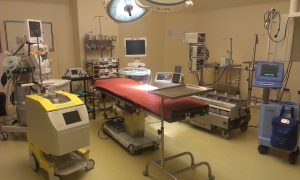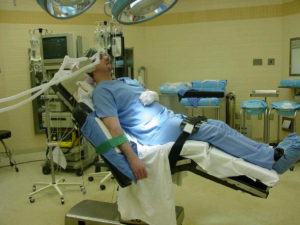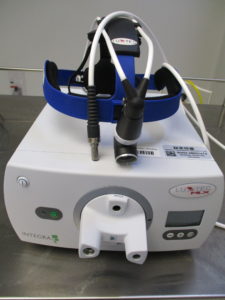Guidelines for Air conditioning in OT
Operation Theatres
The air conditioning requirements for Operation Theater in an HCO deliberated at length with manufacturers, engineers, technical committee members, and other stakeholders.
For this purpose operation theaters have been divided into two distinct groups:
Super specialty OT: Super specialty OT means operations of Neurosciences, Orthopedics (Joint Replacement), Cardiothoracic and Transplant Surgery (Renal, Liver, etc.)
General OT: This includes Ophthalmology and all other basic surgical disciplines. District hospital OTs and FRU OT would fall under this category.
The following basic assumptions kept in view:
OT Size: Standard OT size of 20’ x 20’ x 10’ (Ht. below the false ceiling level is considered).
Occupancy: Standard occupancy of 5-8 persons at any given point of time inside the OT.
Equipment Load: Standard equipment load of 5-7 kW considered per OT.
Ambient temperature & humidity at each location to be considered while designing the system.
Requirement – Super-specialty OT
Air Changes Per Hour: Minimum total air changes should be 30 based on international guidelines although the same will vary with biological load and the location.
The fresh air component of the air change required for a minimum of 5 air changes out of a total minimum of 30 air changes.
If HCO chooses to have a 100% fresh air system then appropriate energy saving devices like Heat Recovery Wheel, Run around Pipes, etc.
Air Velocity: The vertical downflow of air coming out of the diffusers should be able to carry bacteria carrying particle load away from the operating table. The airflow needs to be unidirectional and downwards on the OT table. The air velocity recommended as per the international and national guidelines is 90-120 FPM at the Grille/Diffuser level.
iii. Positive Pressure: There is a requirement to maintain a positive pressure differential between OT and adjoining areas to prevent outside air entry into OT. The minimum positive pressure recommended is 15 Pascal (0.05 inches of water)
Air handling in the OT including air Quality:
Air supplied through Terminal HEPA filters in the ceiling. The minimum size of the filtration area should be 8’ x 6’ to cover the entire OT table and surgical team. The minimum supply air volume to the OT (in CFM) should be compliant with the desired minimum air change.
The return air picked up/ taken out from the exhaust grille located near the floor level (approx. 6 inches above the floor level). The air quality at the supply i.e. at grille level should be Class 100/ ISO Class 5 (at rest condition). Class 100 means a cubic foot of air must have no more than 100 particles measuring 0.5 microns or larger.
Temperature and Humidity: Temperature and Humidity of OT should be maintained at 21 +/- 3 Deg. C inside the OT all the time with corresponding relative humidity between 40 to 60% though the ideal Rh considered to 55%. Appropriate devices to monitor and display these conditions inside the OT may be installed
Air Filtration: The AHU must be an air purification unit and air filtration unit. There must be two sets of washable flange type pre-filters of capacity 10 microns and 5 microns with aluminum/ SS 304 frame within the AHU. The necessary service panels to be provided for servicing the filters, motors & blowers. HEPA filters of efficiency 99.97% down to o.3 microns or higher efficiency are to be provided in the OT and not in the AHU.
- The AHU of each OT dedicated and should not link to the air conditioning of any other area.
- During the non-functional hours, the AHU blower will be operational round the clock (maybe without temperature control).
VFD devices may be used to conserve energy.
Window & split A/c should not be used in any type of OT because they are pure recirculating units and have convenient pockets for microbial growth that cannot be sealed.
The flooring, walls, and ceiling should be non-porous, smooth, seamless without corners, and should be easily cleanable repeatedly.
Temperature and Humidity check
Air Change Rate Calculation
Air velocity at the outlet of terminal filtration unit /filters
Pressure Differential levels of the OT ambient/adjoining areas
Validation of HEPA Filters by appropriate tests like DOP etc.
Maintenance of the system: It recommended that periodic preventive maintenance, carried out in terms of cleaning of pre-filters at the interval of 15 days. Preventive maintenance of all the parts carried out as per manufacturer recommendations.

